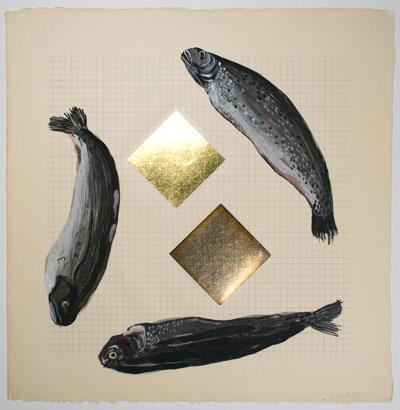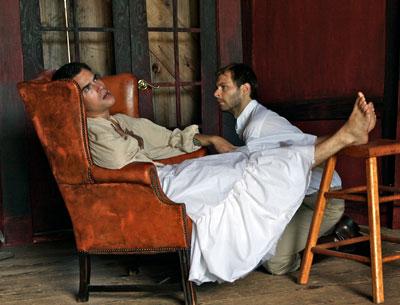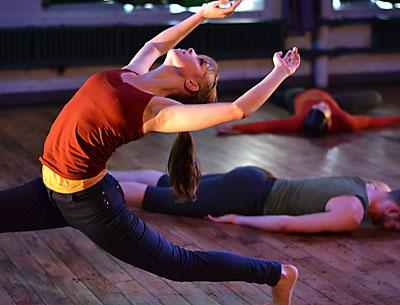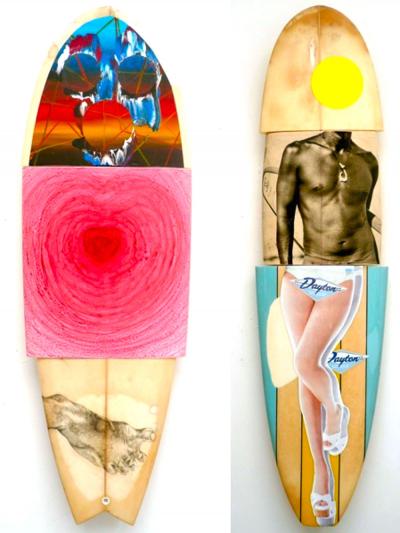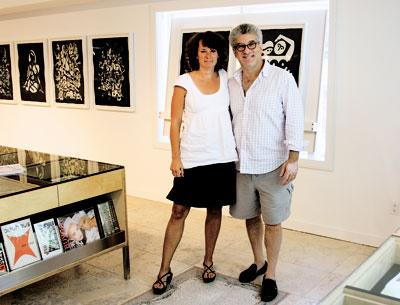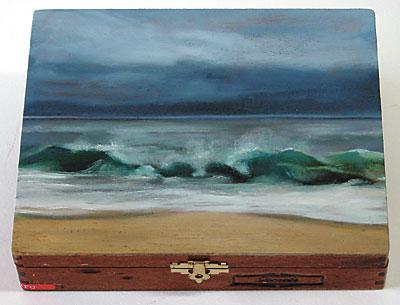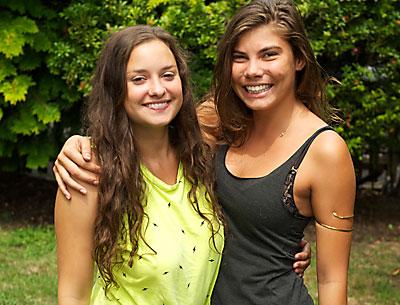The Art Scene: 08.30.12
The Art Scene: 08.30.12

Tonal Vision
Glenn Horowitz Bookseller in East Hampton will shift its usual focus to host Peter Dayton’s “rocknrollshrink” record release on Sunday from 6 to 8 p.m., along with a preview of the exhibition “Andy Warhol: Album Covers.”
A clear vinyl 12-inch 45 r.p.m. disc, “rocknrollshrink” is also an archive of Mr. Dayton’s interactions with his patients as the shrink in the title. The recording contains their accounts and reminiscences of how rock music affected their lives. “Rock and roll destroyed my life,” John, 43, says in one of the testimonials. “My uncle gave me ‘Blonde on Blonde’ when I was 8 . . . so there ya go,” says Katrina, age unknown. “Rock and roll is about fucking, that’s what it means,” according to Eric, 51.
Mr. Dayton, who also founded the 1970s punk band La Peste, designed the cover and label of the record, which is available in an edition of 300. An MP3 will be available at 6decadesbooks.com.
The Warhol show will include his complete collection of 60 covers, such as the Rolling Stones’ “Sticky Fingers” zipper cover and the full-page blotted line drawings found on Tchaikovsky’s “Swan Lake, Acts I & II.” It will run through Sept. 24.
New Duo at Halsey Mckay
Halsey Mckay in East Hampton will open its next show — work by David Kennedy-Cutler and Elise Ferguson — on Saturday from 6 to 9 p.m. According to the gallery, the artists share “idiosyncratic approaches with materials to their unique interpretations of geometry and abstraction.” Ms. Ferguson is a painter. Mr. Kennedy-Cutler is a sculptor.
Ms. Ferguson’s pigmented plaster reliefs will hang in the downstairs gallery and are inspired by Louis Kahn. While abstracted, her sculptural objects offer hints of material things such as stovetops, industrial packaging, and construction tools and materials.
Mr. Kennedy-Cutler’s work reflects his neighborhood in Greenpoint, Brooklyn, a fairly remote, industrial area where pollution and gentrification meet in a muddle. His sculptures contain epoxy resin, clear and tinted Plexiglas, acrylic printer’s process ink, photographs of oil rainbows on wet asphalt, smashed compact discs, and recycled motor oil. The exhibition is on view through Sept. 30.
Hurricane Talk
Richard Barons, the director of the East Hampton Historical Society, will give a curator’s talk on Saturday at 10 a.m. on the current exhibit, “The Long Island Express: Rare Photographs of East Hampton After the 1938 Hurricane.” The show, which is on view on weekends at Clinton Academy, is the result of the discovery of dozens of hurricane pictures tucked away in two family photo albums found locally in an antique bureau.
Responsible for more than 600 deaths on Long Island and New England, the Hurricane of ’38 is the one against which all other severe weather incidents in the region are measured. It hit land at Westhampton Beach and made Montauk into an island. The show includes more than 125 rarely seen images taken in the aftermath of the storm. Mr. Barons will repeat the talk on Sept. 15.
Eighth “Body of Work”
“Body of Work VIII” will be shown at Ashawagh Hall in Springs beginning tomorrow and running through Monday. It features work by artists such as Rosalind Brenner, Linda Capello, Ellen Dooley, Michael Cardacino, Tina Folks, Gordon Gagliano, Anthony Lombardo, Michael McDowell, Frank Sofo, and Margaret Weissbach. The artists make up a group that is interested in depicting the figure in various forms of naturalism and abstraction. A reception will be held on Saturday from 5 to 8 p.m.
Ramiro at Grenning
The Grenning Gallery has a solo show of work by Angel Ramiro Sanchez, known simply as Ramiro, on view now in Sag Harbor. It features pieces from his series of studio interiors that, intimate and on a human scale, are far removed from his grander historical paintings. The artist had a retrospective in Milan in 2011 and traveled to St. Petersburg, Russia, last winter, which inspired the painting “Memories of St. Petersburg.” In addition to his interior scenes, a number of East End landscapes are in the show.
New at Kramoris
The Romany Kramoris Gallery in Sag Harbor will show the work of Herbert August and Michael Yurick beginning today and on view through Sept. 20, with a reception on Saturday from 5 to 7 p.m. Mr. August, an abstract artist, is from Sagaponack. His work often starts from nature and then moves away from the form as he focuses and expands on aspects of it.
Mr. Yurick will show his “Rising Sky” series of metallic, iridescent, and flat finished paintings. His works are abstracted, too, but inspired by the meeting of sea and sky.
Bilotta at Crazy Monkey
Barbara Bilotta’s work is featured in a solo show at the Crazy Monkey Gallery in Amagansett. Ms. Bilotta was the winner of the gallery’s 2012 art competition in February. She paints large colorful canvases in a style she calls “abstract impressionism.” The artworks of all of the members of the artist cooperative are also on view through Sept. 29. A reception will be held on Saturday from 5 to 7 p.m.

